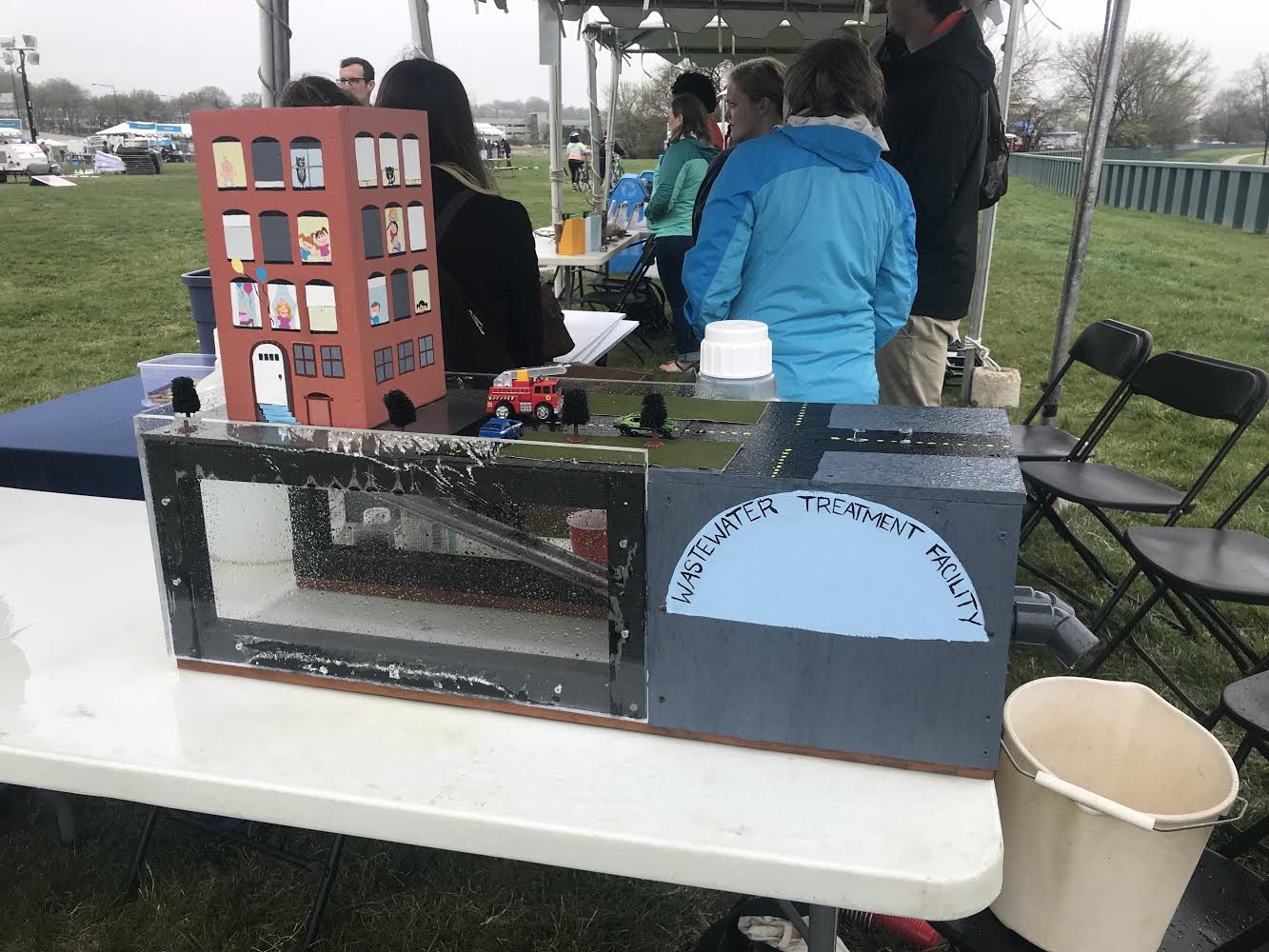Knauss legislative fellowships in Congress help build careers — and they're fun and educational. See our video and fact sheet for details.
The Year of the Anacostia
In early March, I visited the Anacostia River in Washington D.C. for the first time.
As I sat on the boat and looked out at the waters around me, I noticed large piles of trash floating along the sides of the river channel, harmful algal blooms clogging the river’s downstream reaches, and poor water quality, indicated by the deep brown color.
As an environmental scientist, it is easy to feel angry when I see such unhealthy ecosystem conditions. However, as I sat on the boat and collected samples of the murky, brown water to take back to the lab, I felt somewhat optimistic.
In the near future, during my work on the Anacostia River, I may begin to see improvements in water quality. I may have the privilege of watching the restoration of the Anacostia River occur in real time.
The Anacostia River is one of the most polluted tributaries in the Chesapeake Bay region. Historically, the Anacostia River received a mixture of urban sewage effluent and stormwater from 14 combined sewer overflow (CSO) outfalls. These CSOs were initially designed to hold the untreated effluent; however, polluted waters would frequently overflow into the Anacostia River. In fact, until recently, millions of gallons of untreated CSO water entered the Anacostia River annually.

Before the Anacostia River Tunnel project was implemented, polluted waters would frequently overflow from these CSO outfalls into the river. Photo credit: Samantha Gleich
For many years, the Anacostia River was known as the “forgotten river”, as this polluted waterway did not receive much attention from managers or government authorities. This neglect inspired small grassroots organizations and concerned citizens to take legal action and fight for the restoration of the river in the 1990s. The lawsuit that ensued as a result of these grassroots movements led the D.C. Water and Sewer Authority, in conjunction with the EPA, to establish a long-term plan that would make the Anacostia River swimmable and fishable by 2025.
In attempt to improve the water quality of this polluted river system, the Anacostia River Tunnel was opened in March 2018. The Anacostia River Tunnel is the first phase of a two-tunnel, multi-billion-dollar engineering plan that was designed to divert the polluted CSO effluent to a wastewater treatment plant. This Tunnel is 2.3 miles long and can hold up to 400 million gallons of effluent underground until the water can be properly treated, thus preventing contaminated waters from overflowing into the river. Also, the Anacostia River Tunnel is one of the most expensive and innovative plans of its type in the country and will reduce the amount of CSO effluent reaching the river by up to 80 percent.
In addition to these newly designed water-storage tunnels, green stormwater infrastructure projects, such as urban rain gardens and green roofs, are also being constructed in the District. The purpose of these green infrastructure projects is to filter and absorb urban stormwater, ultimately improving the quality of the water that is eventually entering tunnels and river systems. Though green infrastructure projects have become popular in recent years, the public and some government officials remain skeptical about the overall effectiveness of these unconventional green management strategies.
In addition to the changes in stormwater and sewage management that are underway, there are also plans to grow and revive certain regions of the District. Its population currently sits at 693,000 residents and by 2038 the population of this city is expected to reach a million. The revival of the Anacostia River coincides with the growth of neighborhoods east of the Capitol and may play a central role in expanding this region of the city.

At the 4th annual Anacostia River festival, I used a wastewater treatment plant model made by Melanie Jackson and Jeff Alexander to explain the goal of the Tunnel project to local citizens. Photo Credit: Samantha Gleich
On Sunday, April 15th, the 4th annual Anacostia River Festival was held at the 11th Street Bridge Park in Washington D.C. to celebrate the Anacostia River and to provide the public with exciting information regarding the newly implemented Anacostia River Tunnel. I monitored an information booth at this festival along with students from Gallaudet University, who had been helping me with biweekly water quality monitoring on the river. Despite the cold, rainy weather, many local citizens came to the festival and were eager to hear about the Tunnel project. To explain how the Tunnel would work, we had a model wastewater treatment plant set up on a table. The Gallaudet students and I poured water that was “dirty” with glitter into the wastewater treatment plant model. Then, we flipped a switch and the plant could begin operating. The water that came out of the wastewater treatment plant was clear, as all of the dirt (glitter) had been effectively removed through the water treatment process.
This demonstration seemed to effectively convey the Tunnel project’s goal, and many of the citizens I spoke to seemed excited about its potential to improve water quality.
This year (2018) was named “the year of the Anacostia”. The river’s potential restoration is exciting to citizens, organizations, and scientists alike. Through my roles as a scientist and a Maryland Sea Grant Fellow, I am excited to monitor the Tunnel Project’s effectiveness. This river has put up with a long history of harm and neglect from governments and industries that surround its banks. But the Anacostia’s future looks to be a long way from its past, and its rebirth will bring good things not just to the river, but also to the communities around it. They’ve been waiting a long time.
Photo, top: Boat on the Anacostia River. Photograph, Samantha Gleich
See all posts to the Fellowship Experiences blog



